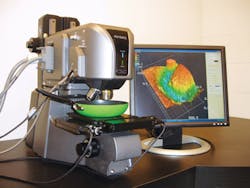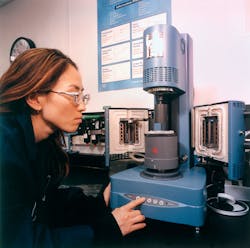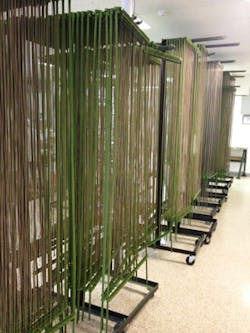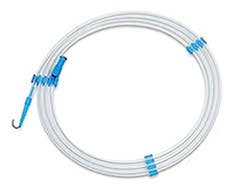Assuring Quality in Low-Friction Coatings for Medical Devices
This article was originally published on MedicalDesign.com in June 2014.
High-performance coatings are low-friction, dry-lubricant materials that achieve remarkable synergy by combining the capabilities of two types of engineering plastics. Fluoropolymers, with the lowest coefficient of friction of any known solid, are combined with high-temperature organic polymers to provide unique and highly versatile combinations of properties.
Whitford Worldwide was founded in 1969 for precisely the manufacture of high-performance fluoropolymer coatings. From its inception, the focus has been on providing customized specialty coatings utilizing fluoropolymers as the “active" ingredient. These coatings are used in a variety of applications, from fasteners to oil field equipment to aircraft to medical devices. All products are consistently manufactured to high ISO standards.
Many of Whitford’s coatings are used in the food-contact industry and have been for 40 years, which means they are subject to compliance with the exacting standards set by the Federal Food and Drug Administration and the regulatory agencies of all the countries into which Whitford products are sold. Whitford coatings meet the strictest standards of all these regulations.
With this confocal microscope, Whitford QC technicians can examine the shape of coating ingredients, in three dimensions.
These tough lubricating coatings can operate successfully at temperature extremes, which at the low end, would render ordinary fluid lubricants too high in viscosity and, at the high end, char them to ash.
With high-performance coatings, there is no "one size fits all." That’s because the balance of ingredients can be altered to maximize the specific performance characteristics required by a given application.
Benefits
The benefits that these high-performance coatings can provide are many, and include:
* Low friction: a coefficient of friction as low as 0.02
* Outstanding release
* Wear/abrasion resistance
* Corrosion or chemical resistance
* Weather resistance
* A wide operating temperature range
* A cure schedule ambient to 825°F
* UV-stability
* The ability to be machined
* Electrically conductive
* Pliable
* A special color
These coatings, with such remarkable versatility, have been solving problems for many years in many different industries, such as automotive, off-shore, industrial bakeware, reprographic, waterworks, textiles, cookware, bakeware, small electrics, etc.
Spray testing of each lot is one of the necessary tests for medical grade coatings.
Transition to the Medical Industry
Not surprisingly, these coatings were identified as offering benefits for the medical industry. Perhaps the most important benefit is the tactile “touch” that is critical to cardiologists using guide wires to clear a vascular occlusion. The fluoropolymer (usually polytetrafluoroethylene, or PTFE) coating on the surface of the guide wire eases passage of the wire through the vascular system, delivering a steady tactile feedback to the operator’s hand. When he or she feels resistance on the probe, the obstruction has been located and clearing it can begin.
Because of the critical nature of these coatings—for consistency and adhesion in the environment in which they are used—they are manufactured to standards that would seem extreme in other industries. For instance, all manufacturing procedures follow an ISO 9000 discipline that is modeled after pharmacological procedures.
Rheology tests of coatings measure properties that are more complex than just viscosity, and provide a clear indication of how a coating will perform in application processes.
From the outside, these procedures appear similar to the manufacturing procedures for any coating. However, substantially more attention is paid to the details of actual production. For instance, sample retention and lot number tracking, from the receipt of the various raw materials to the final packaging, are monitored, recorded, and archived. The purpose is to ensure unerring consistency of the coating, lot after lot.
The number of coated guidewires used by medical practitioners, for cardiac, oncological, and other procedures is staggering. For each procedure, the low-friction coating on the surface of the wire provides the predictable “touch” so necessary to the operator. (This photo is courtesy of SSG.)
Adhering to the Formulation
The manufacture of a medical-grade coating follows these steps and is closely monitored along the way:
1. Along with the samples, supplier lot numbers, manufacturing dates, certifications are accumulated and filed for future reference if needed. Lot number tracking begins here.
2. Having been approved by the incoming QC process, the materials are released to production. They are weighed according to the formulae and production begun.
3. The manufacturing process and the specific sequence of addition of materials are on the plant work order and are followed precisely. Additional manufacturing steps such as specific equipment, motor speeds, time, and mixing-blade size are all noted on the work order.
4. During the process, and depending upon the specific product, several QC checks may be specified. Once passed the QC, manufacture continues. Once the process is completed from the production point of view, a sample goes to the QC lab for a final check. At this point all physical characteristics are measured against the product specifications. These include measuring weight solids, density, viscosity, and inspecting for clarity in clear coatings or color for pigmented products. The coatings are sprayed, cured, and checked for color and adhesion on the substrate they are intended for (aluminum, carbon steel, stainless steel, or other special substrate). This data is all recorded on the plant work order, and backed up electronically for archival security. In the event a problem arises, Whitford has highly specialized equipment to identify it. For example, a Horiba laser instrument can measure particle size down to 10 nanometers. Whitford’s Confocal microscope can magnify up to 16,000 times—not only in 3-D color, but also with the capacity of image rotation. It can perform a non-contact scan of the surface. There is a Rheometer to test the working stability of the coating, as well as the more prosaic Differential Scanning Calorimeter, Thermal Gravimetric Analyzer, Gas Chromatograph, Mass Spectrometer, a TGIR—instruments whose value surpasses $1 million.
At this point, a PTFE coating is ready for application, to guide wires, probes, or other medical devices. The user has the assurance that the tactile performance of the coating, in vitro, will be unvarying from one day to the next.
The Role of the FDA
Within the coating industry, one often hears the terms “approval,” “compliance,” or “acceptable” being used interchangeably with respect to the FDA. In fact, these terms are not interchangeable.
Pictured above is an example of a coated medical guidewire.
The FDA plays an indirect role in the manufacturing of coating. The FDA does not approve a particular coating for a medical device or for any devices in any other industry, perhaps because there are so many of them. And the list grows daily.
What the FDA does do is determine those ingredients that are acceptable for use in medical-use coatings or with food contact.
Thus, when a coating manufacturer formulates a coating, each constituent material—from solvent to pigment to PTFE particles—must comply with the FDA regulations that are explained in the CFR Title 21.
Only after lengthy research can a coating manufacturer say that a coating is FDA-acceptable.
As with any new medical device or addition to an existing medical device, any company using coatings for medical applications must undertake their own clinical tests and other studies to determine the safety and efficacy of the coatings and other products for medical applications.
About the Author
Brian M. Willis
Brian M. Willis is Technical Applications Specialist at Whitford Worldwide, manufacturers of high-performance fluoropolymer coatings.





